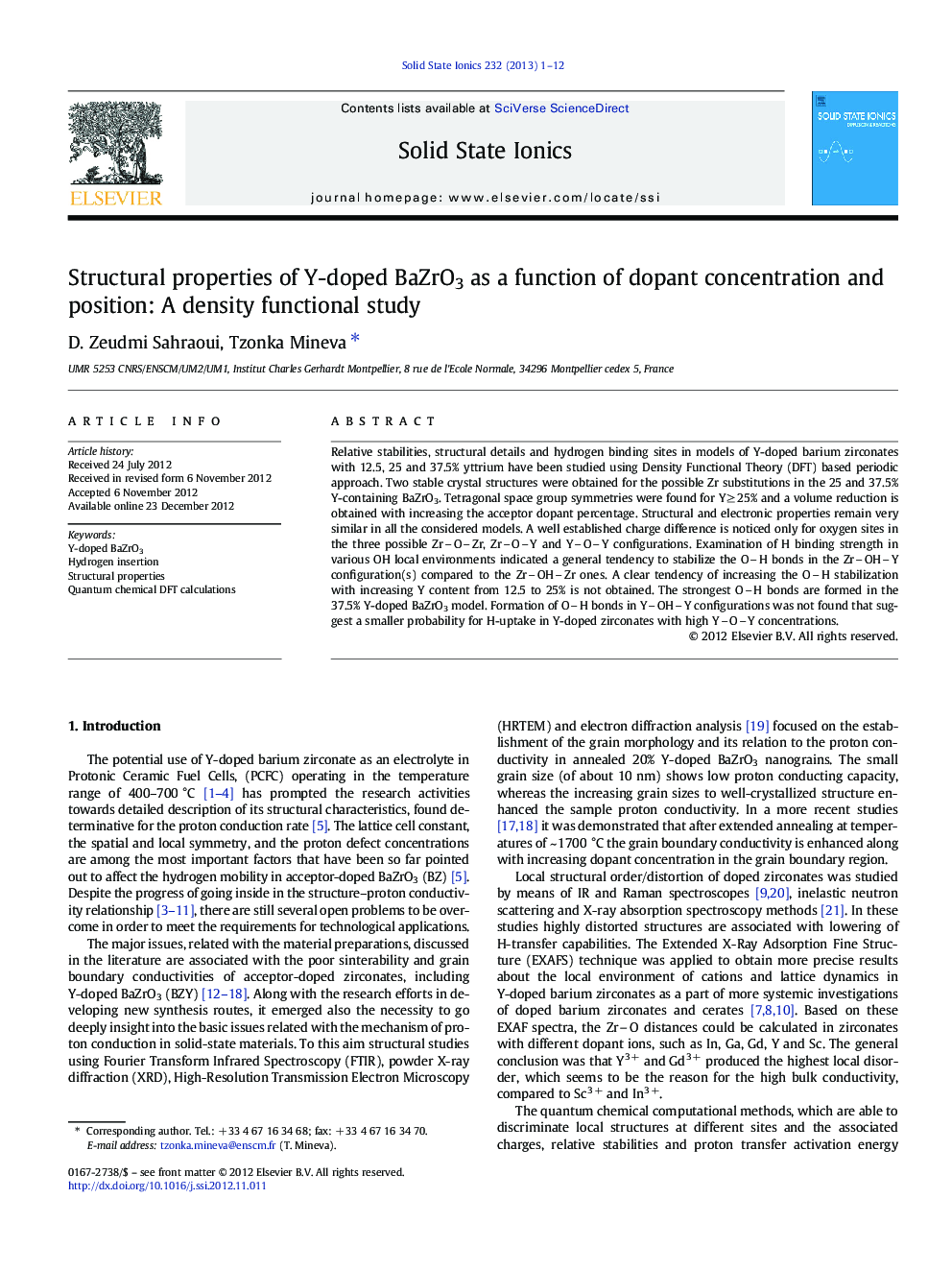| Article ID | Journal | Published Year | Pages | File Type |
|---|---|---|---|---|
| 1296834 | Solid State Ionics | 2013 | 12 Pages |
Relative stabilities, structural details and hydrogen binding sites in models of Y-doped barium zirconates with 12.5, 25 and 37.5% yttrium have been studied using Density Functional Theory (DFT) based periodic approach. Two stable crystal structures were obtained for the possible Zr substitutions in the 25 and 37.5% Y-containing BaZrO3. Tetragonal space group symmetries were found for Y ≥ 25% and a volume reduction is obtained with increasing the acceptor dopant percentage. Structural and electronic properties remain very similar in all the considered models. A well established charge difference is noticed only for oxygen sites in the three possible ZrOZr, ZrOY and YOY configurations. Examination of H binding strength in various OH local environments indicated a general tendency to stabilize the OH bonds in the ZrOHY configuration(s) compared to the ZrOHZr ones. A clear tendency of increasing the OH stabilization with increasing Y content from 12.5 to 25% is not obtained. The strongest OH bonds are formed in the 37.5% Y-doped BaZrO3 model. Formation of OH bonds in YOHY configurations was not found that suggest a smaller probability for H-uptake in Y-doped zirconates with high YOY concentrations.
► Providing of detailed structural property variations upon Y uptake in BaZrO3 ► Significant change of O-site charges as a function of local O-configurations ► Local properties around O-site have the strongest impact on OH binding strengths.
